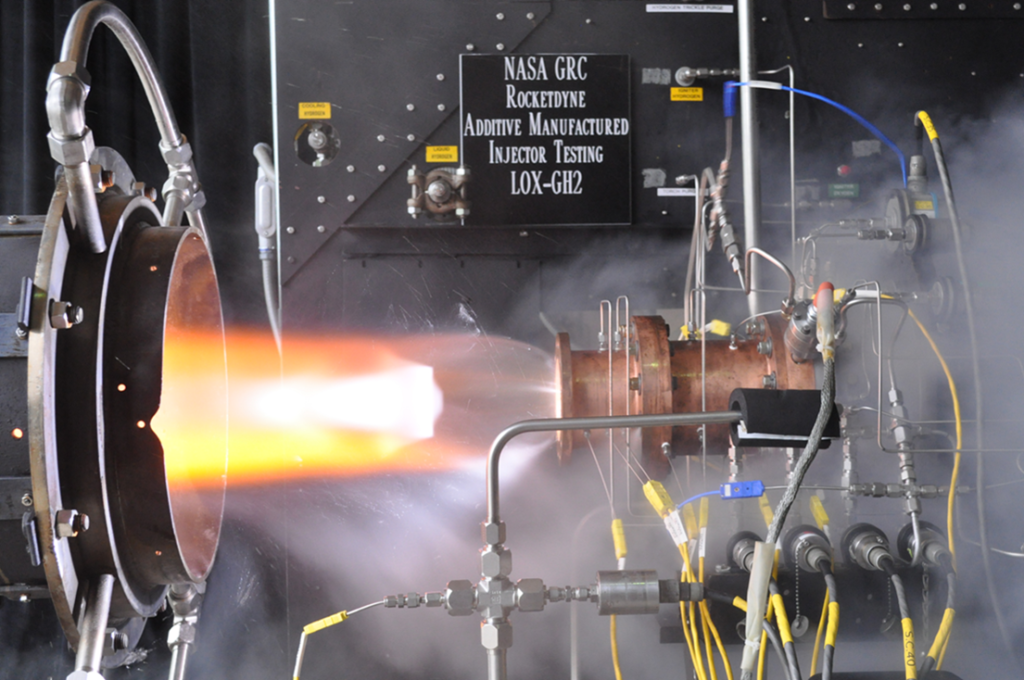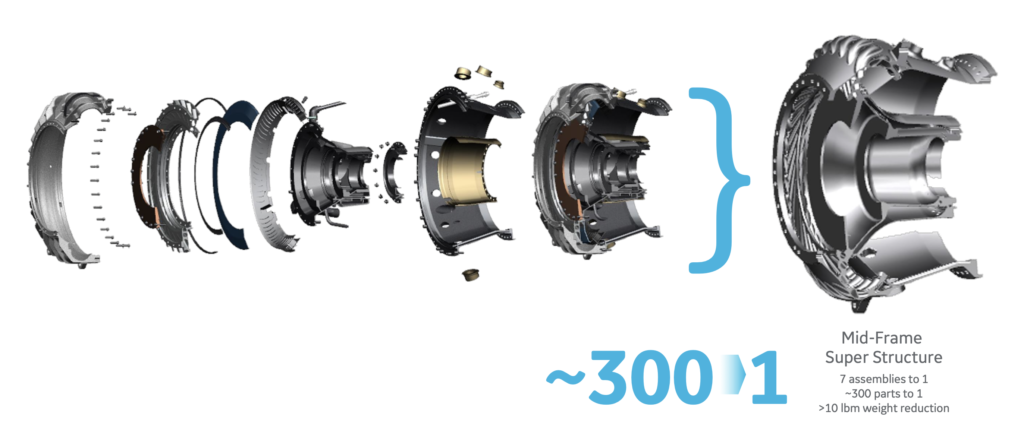One of the feats 3D printing can accomplish is part count reduction. Public studies by NASA and other researchers have shown that in rocket engines, for example, 80 parts can be reduced to just three. Likewise, GE has proclaimed that 12 3D printed parts now replace what would have been 800 components on its Catalyst turboprop engine.
In 2018, I wrote an article advocating for part count reduction. Indeed, it is something that has been very successful for many companies behind the scenes but is not often enough touted as a success. It is also not often enough understood why part count reduction is so advantageous. In order to once again try to convince you that cutting the number of parts in an assembly is of paramount importance, this article lists all of my new learnings since 2018.

NASA and Rocketdyne’s Baby Bantam 3D printed rocket engine reduced part count significantly from several dozen to three while speeding up development time and lowering cost. Image courtesy of NASA.
On the whole, we can see myriad advantages emerge if we reduce the number of total components in an assembly. For example, we can produce efficiently and have more efficient final parts by eliminating fasteners, glues, and reducing material.

- Part count reduction means that assemblies will have less weight overall, due to fewer fasteners and an integration of functionality.
- Integrating functionality, in turn, changes the manufacturing equation in a number of ways: components can be printed at lower cost because you will need fewer machine hours to make them;
- Overall, 3D printing will be a more efficient technology to use;
- It will be progressively cheaper to make new things with 3D printing;
- It will be cheaper while also faster to iterate design changes or develop new designs with 3D printing;
- Space needed for storage of parts is reduced to storage for a single part;
- All parts can be made specifically to work best as an integrated assembly rather than as discrete objects.
- Fewer parts as a whole also reduces a number of other variables, such as less surface area and less surfaces to post-process overall;
- Less handling costs;
- Fewer machine hours, in turn reducing costs;
- Less handling in QA and QC processes;
- Fewer parts have to be tested, reducing costs and accelerating the testing process;
- Less tooling in total;
- Your buy to fly ratios will be improved as you will need less material, overall. This effect is compounded since you will need fewer components.
- Form factors can be radically altered by removing fasteners, integrating functionality and changing the shape of the part.
- Reduced transport costs due to fewer parts, less mass, and centralization of manufacturing.
- Depending on a number of variables, fewer emissions and less energy could result due to use of less material, transport and machine hours, thus improving sustainability overall.
- Fewer parts, less tooling, and less material overall should significantly reduce storage costs. This can make factories more efficient by reducing:
- Time
- Square meter costs of your factory;
- Size of your building and ancillary costs.
- Less capital is tied up in storage costs and stored materials, this may save some companies billions.
- Less capital is tied up in tooling in advance of new products.
- Less capital is tied up in spare parts and keeping tooling around in case you need it.
- Less capital is tied up in spare parts, including fewer warehouses, fewer people to man them, less energy to operate them etc.
- Parts can be redesigned faster because you don’t need to change the tooling also.
- Parts can be cheaper to redesign because you don’t have to change the tooling.
- Integrating functionality and fewer parts means that fewer parts have to be stored, simplifying logistics.
- Integrating functionality and fewer parts means that parts are larger and can be more complex so that you can charge more for them when they break.
- Integrating functionality and fewer parts mean that parts are larger and can be more complex meaning that MRO and spare parts services are simpler to operate.
- Integrating functionality and fewer parts means that parts are larger and more complex, meaning that MRO and spare parts services can make more profit by selling more expensive parts with simpler fulfillment.
- Design changes are more simple to carry out.
- Design changes are faster to carry out.
- Iterations are easier to do, especially since knock on effects on other parts can be dealt with in the one new part.
- Less parts are in transit with you paying for them as they sit on docks or in ships.
- Fewer parts mean that there is less of a risk of waiting for suppliers to fulfil orders that are blocking your progress.
- Cash flow and Capex needed for new products are reduced.
- Companies can be more responsive to the market.
- Companies can more easily change a product to meet a new emerging competitor, niche or application.
- Products can be updated faster and at a lower cost.
- Time to market is improved overal.
- Fewer people will be needed overall.
- Fewer parts mean fewer service costs.
- Fewer parts could mean less time taken to replace a part which will mean less downtime overall.
- Fewer parts could mean less time to replace a part, less maintenance costs, less downtime, and fewer service visits.
- With redesigns being cheaper companies can take more risk on making a product version more daring or premium.
- Many variants could let companies more easily optimize their product mix.
- New specific integrated shapes could be patented.
- Assembly risk is concentrated on 3D printing.
- Fewer production steps mean that overall production would be expected to be faster.
- Fewer production steps would make Six Sigma and other goals more attainable since fewer mistakes may be made.
- The elimination of fasteners, glues and steps risks of materials interfering with each other is reduced.
- By reducing the number of materials overall there will be fewer expected material failures since we can focus our energy into understanding fewer materials.
- By automating processes, we would expect to have higher reliability and repeatability.
- We would expect to make fewer mistakes because we’re doing fewer steps and there is less of a human element.
- By making more and more of your parts using one process and fewer materials you become more flexible.
- You can use printers to print different parts according to fluctuating demand.
- You can become more agile as an organization overall.
- By being more agile and reducing your time to market, you can become more competitive.
- By focusing on fewer materials and steps, it will be easier for you to attain excellence.
- By being more excellent and competitive you can outcompete while reducing costs, reducing time to market and reducing CAPEX by integrating functionality and reducing part count. These advantages will compound each other and lead to a sustainable competitive advantage for you.

Recent Comments